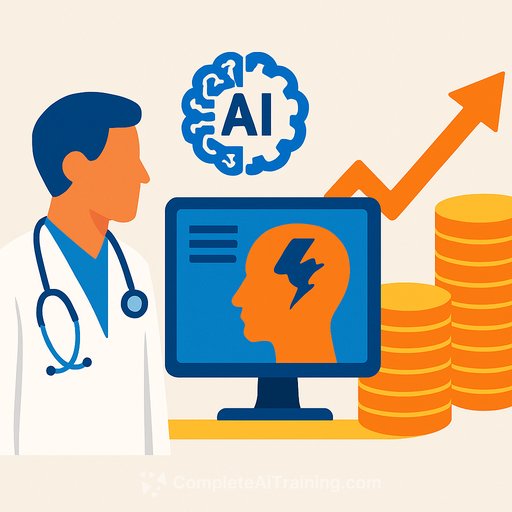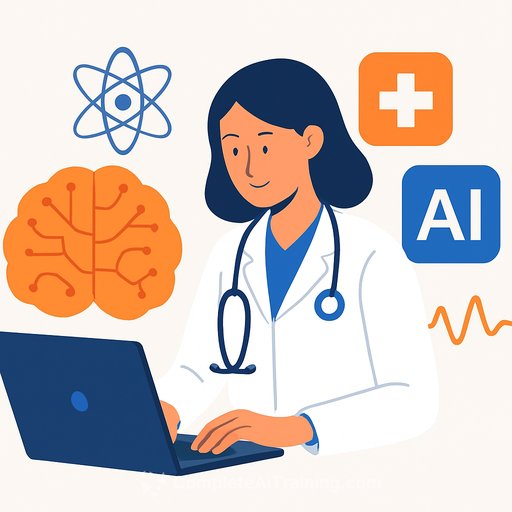How OSF HealthCare Improved Stroke Care with AI-Driven Imaging and Coordination
OSF HealthCare, a healthcare system with 18 hospitals in Peoria, Illinois, faced growing pressures in neurovascular care as stroke cases increased in volume and complexity. Transfer management and timely decision-making became critical challenges, especially given limited ICU capacity at comprehensive stroke centers and variations in imaging workflows across the system.
Challenges in Stroke Care Delivery
With constrained ICU beds, OSF needed to ensure that only patients likely to benefit from higher-level care were transferred. Variations in imaging processes and staffing shortages—particularly a nationwide radiologist deficit—added hurdles to consistent, rapid diagnosis. Delays in stroke care can significantly increase mortality risk, making speed and coordination essential.
Dr. Deepak Nair, vice president of the neuroscience service line at OSF, emphasized the need for more than just imaging improvements. "We needed a connected communication process that unites all stakeholders—across hospitals and disciplines—in real time," he said. Aligning teams quickly during urgent cases was just as important as obtaining the scan itself.
Choosing an AI-Powered Solution
To address these issues, OSF evaluated technology from RapidAI, which offers artificial intelligence-driven imaging analysis combined with coordinated care systems. The platform promised to accelerate decision-making and treatment times by delivering consistent, fast insights that support transfer and treatment choices.
The AI tools help clinicians of all experience levels detect vessel occlusions, evaluate hemorrhages, and identify subtle findings that might otherwise go unnoticed. This consistency is especially valuable during off-hours or when specialized radiology expertise is unavailable.
Importantly, the platform integrates with existing systems like Epic EHR and imaging infrastructure, allowing teams to access faster, clearer data without changing their workflows. This seamless integration was key to rapid adoption and demonstrated value early on.
Implementation and Coordination Across the Network
OSF deployed RapidAI technology system-wide, engaging emergency physicians, neurologists, neurointerventionalists, and transfer coordinators. The platform’s modules provide objective imaging insights that level the playing field between hub and spoke hospitals.
For example, the Rapid Aspects module standardizes scoring within seconds, reducing interpretation variability and bringing general radiologists and emergency providers closer to the accuracy of subspecialty neuro-interpretation. This is crucial when expert neuro-radiology is not immediately accessible.
Measurable Results and Improved Patient Outcomes
Since implementation, OSF has seen significant improvements:
- 17% increase in intracranial hemorrhage (ICH) patients identified monthly
- 34% increase in ICH procedure volume from 2023 to 2024
- 155% increase in stroke diagnoses despite a 9% drop in emergency visits
- 347% increase in mechanical thrombectomy procedures
The AI modules enable clinicians to detect suspected bleeds quickly and quantify blood volume with precision, supporting earlier and more confident decisions about treatment or transfer. On the ischemic stroke side, the AI tools for non-contrast CT, CTA, and perfusion imaging play a central role in providing timely, detailed insights.
These improvements translated into 111 more patients receiving timely thrombectomy care, generating an estimated $2.6 million in additional annual revenue. Beyond financial benefits, the platform has strengthened operational efficiency and sustainability of the neuroscience service line.
Key Considerations When Adopting AI in Radiology
Dr. Nair advises healthcare leaders to prioritize AI solutions that truly support clinical decision-making rather than just flagging abnormalities or speeding workflows. The goal is to equip care teams with actionable information to make smarter, more confident decisions for each patient, especially in time-sensitive cases.
Choosing a platform—not a standalone tool—is critical. It must integrate smoothly with existing EHRs, imaging systems, and communication tools, becoming a natural extension of the clinical workflow rather than a disruption.
As clinical needs evolve, the platform should scale without requiring staff to relearn processes. Simplicity, interoperability, and scalability are essential to turn AI from a pilot project into lasting system-wide transformation.
For healthcare professionals interested in learning more about AI applications in clinical settings, resources and courses are available at Complete AI Training.
Your membership also unlocks:






